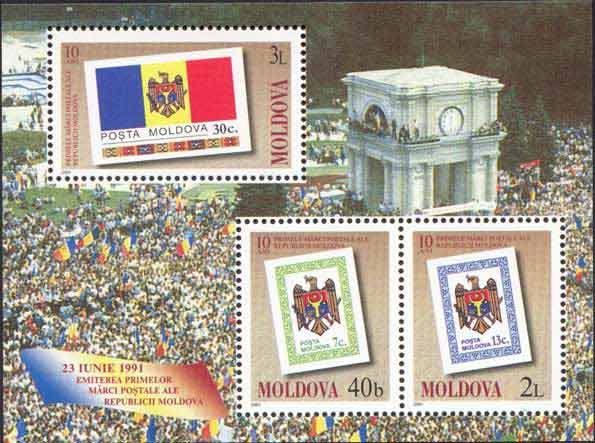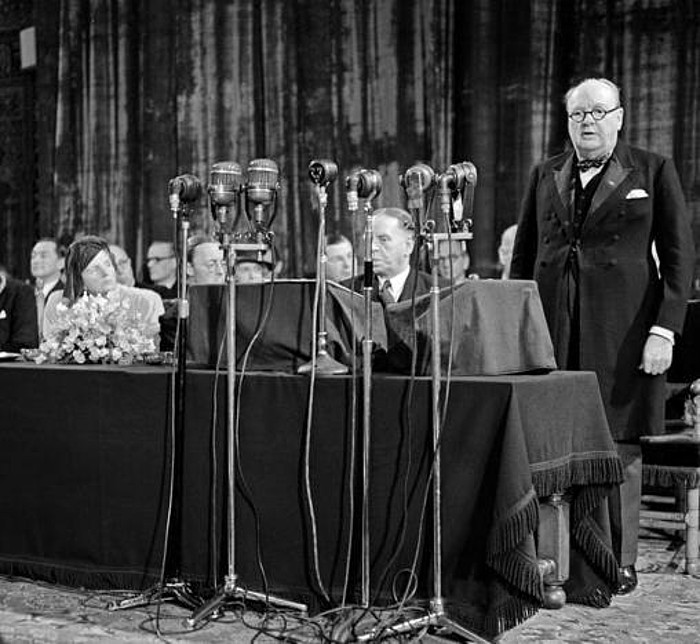|
Independence Of Moldova
The independence of Moldova was officially recognized on 2 March 1992, when Moldova gained membership of the United Nations. The nation had declared its independence from the Soviet Union on 27 August 1991, and was a co-founder of the post-Soviet Commonwealth of Independent States. Moldova became fully independent from the Soviet Union that December, and joined the United Nations three months later. Background In the new political conditions created after 1985 by the glasnost policy introduced by Mikhail Gorbachev in 1986 to support perestroika (restructuring), a Democratic Movement of Moldova () was formed, which in 1989 became known as the nationalist Popular Front of Moldova (FPM; ). Horia C. Matei, "State lumii. Enciclopedie de istorie." Meronia, București, 2006, p. 292-294 Along with several other Soviet republics, from 1988 onwards, Moldova started to move towards independence. On 27 August 1989, the FPM organized a mass demonstration in Chişinău, that became know ... [...More Info...] [...Related Items...] OR: [Wikipedia] [Google] [Baidu] |
Moldova
Moldova, officially the Republic of Moldova, is a Landlocked country, landlocked country in Eastern Europe, with an area of and population of 2.42 million. Moldova is bordered by Romania to the west and Ukraine to the north, east, and south. The List of states with limited recognition, unrecognised breakaway state of Transnistria lies across the Dniester river on the country's eastern border with Ukraine. Moldova is a Unitary state, unitary Parliamentary system, parliamentary Representative democracy, representative democratic republic with its capital in Chișinău, the country's largest city and main cultural and commercial centre. Most of Moldovan territory was a part of the Principality of Moldavia from the 14th century until 1812, when it was Treaty of Bucharest (1812), ceded to the Russian Empire by the Ottoman Empire (to which Moldavia was a Vassal and tributary states of the Ottoman Empire, vassal state) and became known as Bessarabia. In 1856, southern Bessarabia was ... [...More Info...] [...Related Items...] OR: [Wikipedia] [Google] [Baidu] |
Commonwealth Of Independent States
The Commonwealth of Independent States (CIS) is a regional organization, regional intergovernmental organization in Eurasia. It was formed following the dissolution of the Soviet Union, dissolution of the Soviet Union in 1991. It covers an area of and has an estimated population of 246,200,194. The CIS encourages cooperation in economic, political, and military affairs and has certain powers relating to the coordination of trade, finance, lawmaking, and security, including cross-border crime prevention. As the Soviet Union disintegrated, Byelorussian SSR, Belarus, Russian SFSR, Russia, and Ukrainian SSR, Ukraine signed the Belovezha Accords on 8 December 1991, declaring that the Union had effectively ceased to exist and proclaimed the CIS in its place. On 21 December, the Alma-Ata Protocol was signed, but Estonia, Latvia and Lithuania chose not to participate. Georgia (country), Georgia withdrew its membership in 2008 following Russo-Georgian War, a war with Russia. Ukraine f ... [...More Info...] [...Related Items...] OR: [Wikipedia] [Google] [Baidu] |
Disputed Status Of Transnistria
The Transnistria conflict (; ; ) is an List of ongoing armed conflicts, ongoing frozen conflict between Moldova and the List of states with limited recognition, unrecognized state of Transnistria. Its most active phase was the Transnistria War. There have been several unsuccessful attempts to resolve the conflict. The conflict may be considered to have started on 2 September 1990, when Transnistria made a formal sovereignty declaration from Moldova (then part of the Soviet Union). Transnistria is internationally recognized as a part of Moldova. It has diplomatic recognition only from two Russian-backed separatist states: Abkhazia and South Ossetia. Historical status of Transnistria Until the Second World War The Soviet Union in the 1930s had an autonomous region of Transnistria inside Ukrainian Soviet Socialist Republic, Ukraine, called the Moldavian Autonomous Soviet Socialist Republic (MASSR), half of whose population were Romanian language, Romanian-speaking people, ... [...More Info...] [...Related Items...] OR: [Wikipedia] [Google] [Baidu] |
Nazi Germany
Nazi Germany, officially known as the German Reich and later the Greater German Reich, was the German Reich, German state between 1933 and 1945, when Adolf Hitler and the Nazi Party controlled the country, transforming it into a Totalitarianism, totalitarian dictatorship. The Third Reich, meaning "Third Realm" or "Third Empire", referred to the Nazi claim that Nazi Germany was the successor to the earlier Holy Roman Empire (800–1806) and German Empire (1871–1918). The Third Reich, which the Nazis referred to as the Thousand-Year Reich, ended in May 1945, after 12 years, when the Allies of World War II, Allies defeated Germany and entered the capital, Berlin, End of World War II in Europe, ending World War II in Europe. After Hitler was appointed Chancellor of Germany in 1933, the Nazi Party began to eliminate political opposition and consolidate power. A 1934 German referendum confirmed Hitler as sole ''Führer'' (leader). Power was centralised in Hitler's person, an ... [...More Info...] [...Related Items...] OR: [Wikipedia] [Google] [Baidu] |
Molotov–Ribbentrop Pact
The Molotov–Ribbentrop Pact, officially the Treaty of Non-Aggression between Germany and the Union of Soviet Socialist Republics, and also known as the Hitler–Stalin Pact and the Nazi–Soviet Pact, was a non-aggression pact between Nazi Germany and the Soviet Union, with a secret protocol establishing Soviet and German spheres of influence across Eastern Europe. The pact was signed in Moscow on 24 August 1939 (backdated 23 August 1939) by Soviet Foreign Minister Vyacheslav Molotov and German Foreign Minister Joachim von Ribbentrop. The treaty was the culmination of negotiations around Nazi–Soviet economic relations (1934–1941)#1938–1939 deal discussions, the 1938–1939 deal discussions, after tripartite discussions between the Soviet Union, the United Kingdom and France had broken down. The Soviet-German pact committed both sides to neither aid nor ally itself with an enemy of the other for the following 10 years. Under the Secret Protocol, Second Polish Republic, ... [...More Info...] [...Related Items...] OR: [Wikipedia] [Google] [Baidu] |
Transnistria
Transnistria, officially known as the Pridnestrovian Moldavian Republic and locally as Pridnestrovie, is a Landlocked country, landlocked Transnistria conflict#International recognition of Transnistria, breakaway state internationally recognized as part of Moldova. It controls most of the narrow strip of land between the Dniester river and the Moldova–Ukraine border, as well as some land on the other side of the river's bank. Its Capital city, capital and largest city is Tiraspol. Transnistria is officially designated by the Republic of Moldova as the Administrative-Territorial Units of the Left Bank of the Dniester () or as ("Left (Bank) of the Dniester"). The region's origins can be traced to the Moldavian Autonomous Soviet Socialist Republic, which was formed in 1924 within the Ukrainian Soviet Socialist Republic, Ukrainian SSR. During World War II, the Soviet Union took parts of the Moldavian Autonomous Soviet Socialist Republic, Moldavian ASSR, which was dissolved, an ... [...More Info...] [...Related Items...] OR: [Wikipedia] [Google] [Baidu] |
Sovereignty
Sovereignty can generally be defined as supreme authority. Sovereignty entails hierarchy within a state as well as external autonomy for states. In any state, sovereignty is assigned to the person, body or institution that has the ultimate authority over other people and to change existing laws. In political theory, sovereignty is a substantive term designating supreme legitimate authority over some polity. In international law, sovereignty is the exercise of power by a state. ''De jure'' sovereignty refers to the legal right to do so; '' de facto'' sovereignty refers to the factual ability to do so. This can become an issue of special concern upon the failure of the usual expectation that ''de jure'' and ''de facto'' sovereignty exist at the place and time of concern, and reside within the same organization. Etymology The term arises from the unattested Vulgar Latin *''superanus'' (itself a derived form of Latin ''super'' – "over") meaning "chief", "ruler". Its spellin ... [...More Info...] [...Related Items...] OR: [Wikipedia] [Google] [Baidu] |
Dissolution Of The Soviet Union
The Soviet Union was formally dissolved as a sovereign state and subject of international law on 26 December 1991 by Declaration No. 142-N of the Soviet of the Republics of the Supreme Soviet of the Soviet Union. Declaration No. 142-Н of the Soviet of the Republics of the Supreme Soviet of the Soviet Union, formally establishing the dissolution of the Soviet Union as a state and subject of international law. It also brought an end to the Soviet Union's federal government and General Secretary (also President) Mikhail Gorbachev's effort to reform the Soviet political and economic system in an attempt to stop a period of political stalemate and economic backslide. The Soviet Union had experienced internal stagnation and ethnic separatism. Although highly centralized until its final years, the country was made up of 15 top-level republics that served as the homelands for different ethnicities. By late 1991, amid a catastrophic political crisis, with several republics al ... [...More Info...] [...Related Items...] OR: [Wikipedia] [Google] [Baidu] |
Parliament Of The Republic Of Moldova
In modern politics and history, a parliament is a legislative body of government. Generally, a modern parliament has three functions: representing the electorate, making laws, and overseeing the government via hearings and inquiries. The term is similar to the idea of a senate, synod or congress and is commonly used in countries that are current or former monarchies. Some contexts restrict the use of the word ''parliament'' to parliamentary systems, although it is also used to describe the legislature in some presidential systems (e.g., the Parliament of Ghana), even where it is not in the official name. Historically, parliaments included various kinds of deliberative, consultative, and judicial assemblies. What is considered to be the first modern parliament, was the Cortes of León, held in the Kingdom of León in 1188. According to the UNESCO, the Decreta of Leon of 1188 is the oldest documentary manifestation of the European parliamentary system. In addi ... [...More Info...] [...Related Items...] OR: [Wikipedia] [Google] [Baidu] |
Declaration Of Independence Of The Republic Of Moldova
__NOTOC__ The Declaration of Independence of the Republic of Moldova () was a document adopted on 27 August 1991 by the Parliament of the Republic of Moldova following the failure of the August coup attempt. Background The document claims "millennial history" and "uninterrupted statehood" within historic and ethnic borders and refers to the official language as "Romanian". This founding act of the Republic of Moldova is celebrated as the National Day or Independence Day. The original document that was approved and signed by 278 parliamentary deputies in 1991 was burned during the April 2009 Moldovan parliamentary election protests, but an identical document was restored in 2010. Controversy The Moldovan Declaration of Independence clearly and directly claims Moldovan sovereignty over the territory of Transnistria as "a component part of the historical and ethnic territory of our people". This caused controversy, since that region had declared independence from the Moldov ... [...More Info...] [...Related Items...] OR: [Wikipedia] [Google] [Baidu] |
Council Of Europe
The Council of Europe (CoE; , CdE) is an international organisation with the goal of upholding human rights, democracy and the Law in Europe, rule of law in Europe. Founded in 1949, it is Europe's oldest intergovernmental organisation, representing 46 member states from Europe, with a population of approximately 675 million ; it operates with an annual ordinary budget of approximately 500 million euros. The organisation is distinct from the European Union (EU), although people sometimes confuse the two organisations – partly because the EU has adopted the original Flag of Europe, European flag, designed for the Council of Europe in 1955, as well as the Anthem of Europe, European anthem. No country has ever joined the EU without first belonging to the Council of Europe. The Council of Europe is an official United Nations General Assembly observers, United Nations observer. Unlike the EU, the Council of Europe cannot make binding laws; however, the council has produced a numbe ... [...More Info...] [...Related Items...] OR: [Wikipedia] [Google] [Baidu] |







